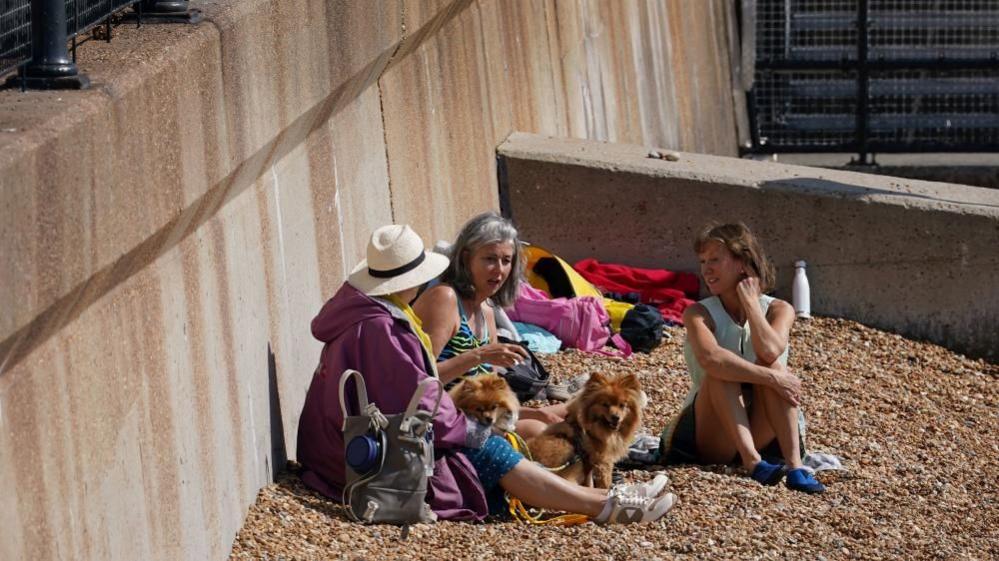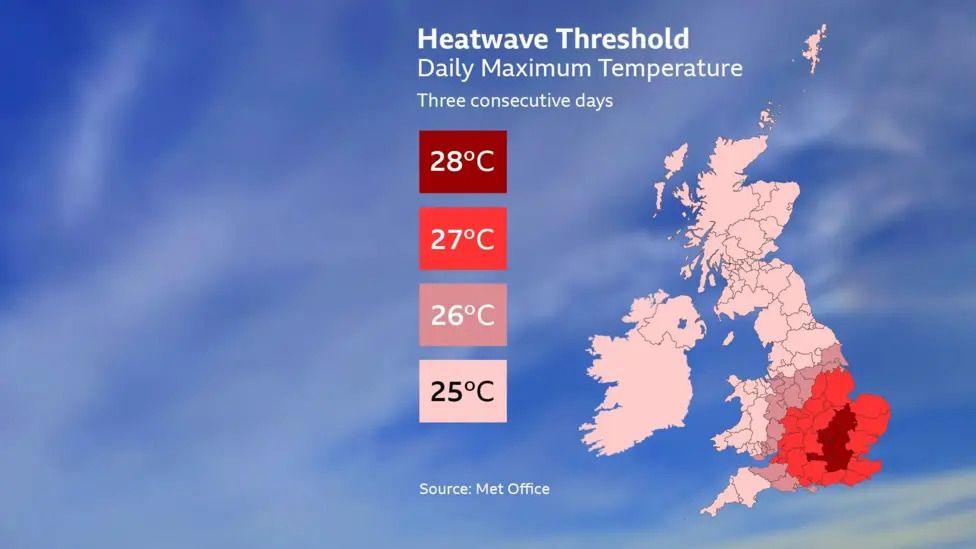Warmest day of year as UK temperature hits 24.9C

The sunny weather was an opportunity to get on the beach in Dover
- Published
The UK saw its warmest day of the year on Tuesday with a peak of 24.9C (76.8F) recorded - and forecasters predicting that later this week could see the hottest start to May on record.
The highest temperatures were seen in Ross-on-Wye in the West Midlands and Trawscoed in the west of Wales - surpassing 2025's previous high of 24.5C recorded at St James's Park in London on Monday.
Forecasters say the current warm spell could see temperatures peak at 29C on the first day of the new month on Thursday, as many voters head to the polls for local elections in England.
High UV and pollen levels also likely. The weather will gradually cool over the bank holiday weekend, although it will stay dry and sunny for most.
The peak temperature in Scotland on Tuesday was 22.4C at Aboyne, while 22.2C was recorded at Derrylin in Northern Ireland.
They will widely be in the low to mid-twenties on Wednesday, with the hottest weather likely in the London area at 27C.
The last time this temperature was recorded in April was in 2018 in Cambridge.

People out punting in the sunshine along the River Cam in Cambridge
On Thursday, it will get slightly cooler across Scotland and Northern Ireland, as temperatures drop to 13-16C.
But in the south of England, the heat will continue to build and likely result in the UK's warmest start to May on record at 29C.
This exceeds the previous 1 May record of 27.4C at Lossiemouth in 1990.
The warmer than average weather is coming in from southern Europe on a south or south-easterly wind.
With high pressure not changing significantly - or becoming blocked - through the week, strong sunshine also adds to further warming of the air in the UK.
But with increasing humidity on Thursday, there is also a risk of some heavy and possibly thundery showers breaking out across England and Wales.

Workers in London enjoying the sunshine at lunchtime
Temperatures will gradually fall over the long weekend. However, it will stay dry in most areas, with lengthy sunny spells and light winds.
Northern Scotland and eastern parts of the UK are expected to see the cloudiest weather, especially on Sunday.
By Monday, temperatures will drop to between 12C and 17C across the UK - looking more like the average for early May.
- Published1 day ago
- Published18 July 2024
- Published18 July 2024
Is the UK experiencing a heatwave?
It is not likely that this spell of warm weather will qualify as a heatwave.
This would need at least three consecutive days at or above the "heatwave threshold," which varies depending on where you are in the UK.
It is not unusual to see this type of hot spell in the spring, and April can bring big swings in temperature.
But as our climate continues to warm, this type of spring heat is expected occur more often. Recent analysis found that spring is the fastest-warming season in the UK.

Meanwhile, UV levels across most parts of the UK are expected to be high, except for northern Scotland where they will be moderate.
Some UV radiation is crucial for our wellbeing, enabling our skin to produce essential vitamin D, but too much can be dangerous.
UV radiation promotes skin cancer by damaging DNA in skin cells. Exposure has also been linked to eye problems.
You can also burn just as quickly when it is cloudy, and the sun is as strong this time of year as it is in August.
The NHS recommends spending time in the shade when the sun is strongest, using at least factor 30 sunscreen and reapplying it every two hours, and taking extra care with children.
High temperatures can also affect the body. To stay safe, the UK Health Security Agency recommends drinking plenty of fluids, staying cool indoors, and avoiding exercise during the hottest parts of the day.
Get involved
Your news, your pictures